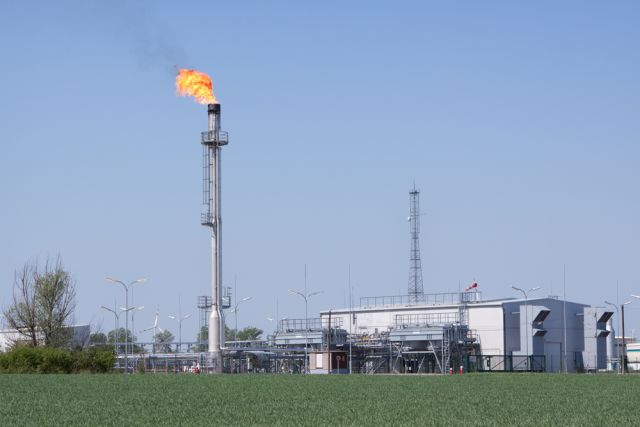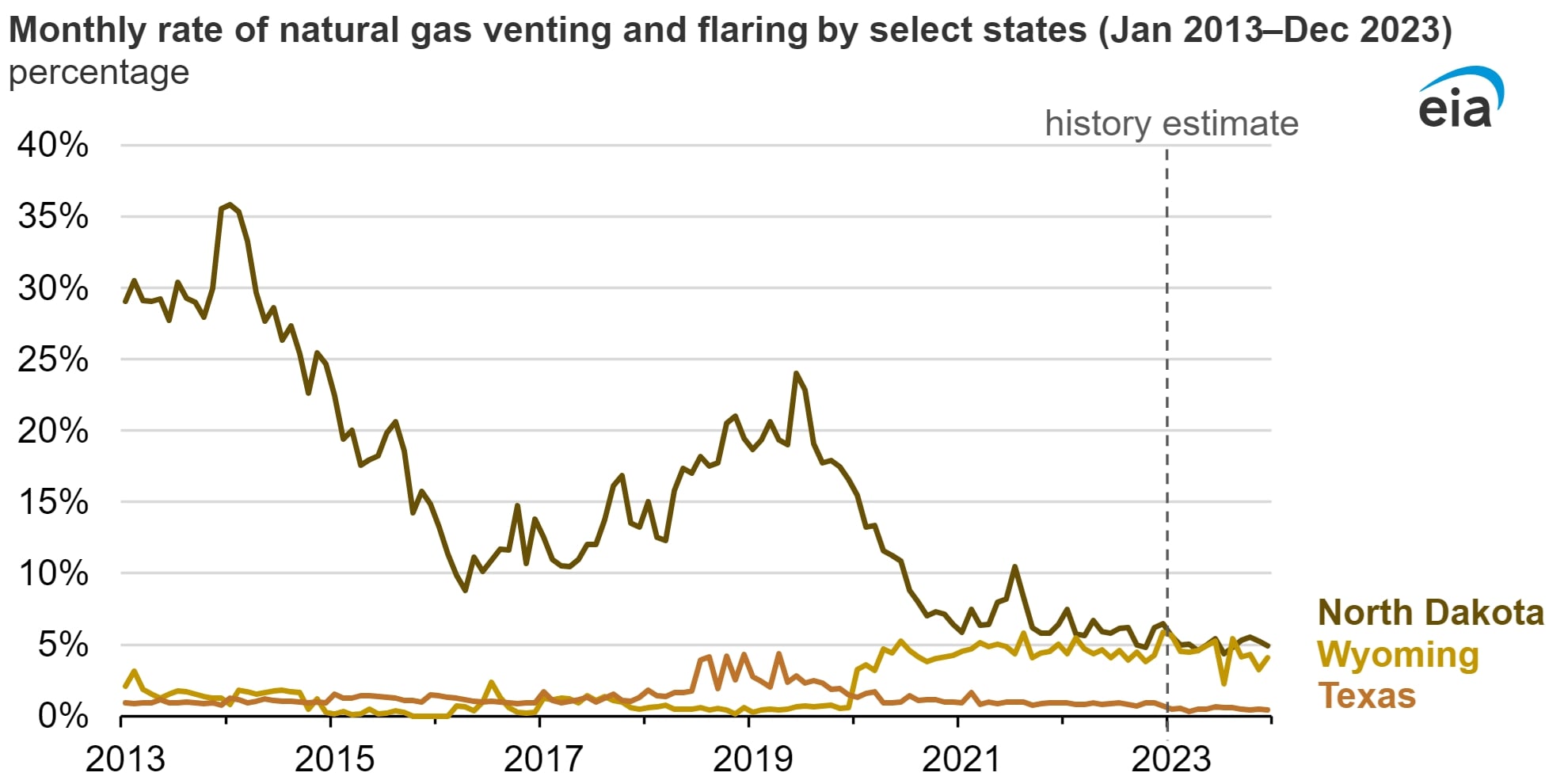
In 2023, natural gas production reached record-high average production levels of 125 Bcf/d. Producers or shippers flared or vented about 0.5%, according to the EIA’s estimate. (Source: Shutterstock)
The U.S. petrochemical industry cut the rate of natural gas lost to flaring and venting in 2023 over 2022, according to an early estimate released by the U.S. Energy Information Administration (EIA) on June 20.
“We estimate this percentage will be the lowest rate of venting and flaring recorded in 18 years,” the EIA published on its website. The agency will publish updated and final results in September.
In 2023, natural gas production reached record-high average production levels of 125 Bcf/d. Producers or shippers flared or vented about 0.5%, according to the EIA’s estimate.
In 2018, about 1.3% of natural gas was vented or flared. In 2022, the rate was 0.62%, or an average of 742 MMcf/d. If the estimate for 2023 holds, the overall natural gas vented or flared in the U.S. will have decreased to about 625 MMcf/d, according to Hart Energy’s calculation using EIA figures.
Oil and natural gas producers vent or flare natural gas in response to emergencies, tests, maintenance or infrastructure constraints. Venting is the direct release of natural gas, primarily methane, during the oil and gas production process. Flaring is the burning of natural gas, which releases CO2 and a smaller amount of methane into the atmosphere. Both practices have come under stricter scrutiny from the federal government in recent years as greenhouse gas reduction is further emphasized.
The rate of vented or flared natural gas varies a great deal across the country, thanks to either state regulations or the nature of the play. Three states, Texas, Wyoming and North Dakota, are responsible for the majority of flaring and venting operations in the U.S.
Texas’ rate of flaring and venting is 0.5%, matching the nation’s average. However, the state was the primary producer of released gas in 2022, thanks to Texas also being the overall largest producer of oil and gas in the U.S.
North Dakota has the worst rate, at 5.1% of gross withdrawals, while Wyoming vented and flared at a rate of 4.4%. The high rates, according to the EIA, are due to the nature of the Bakken Shale. Since 2006, the associated gas produced in the area rose rapidly—faster than infrastructure could be built to take it away. In 2011, North Dakota lost 31.6% of its natural gas.

In 2014, the North Dakota state government banned venting, leading the state to decrease its loss rates.
Texas may see an increase in flaring totals this year. In April, the Texas Railroad Commission saw a large increase in flaring requests over the same time frame from 2023. The requests followed natural gas prices dropping below zero at the Waha price hub near Pecos, Texas. Much of the natural gas from the Permian goes through the hub.
The Permian’s natural gas takeaway capacity has been at its maximum for most of 2024.
While the U.S.’ rate of venting and flaring declined in 2023, another report released June 20 saw an increase in the amount of CO2 released from the practice globally.
According to the Statistical Review of World Energy created by the Energy Institute, an energy trade organization focused on accelerating the transition to net zero, greenhouse gas emissions rose as energy demand increased from 2022 to 2023.
CO2 emissions from flaring increased by 7%; emissions from methane and industrial processes also increased by over 5%, according to the report.
And energy demand is only going to continue to grow as AI demand and U.S. LNG exports increase.
"In a year where we have seen the contribution of renewables reaching a new record high, ever increasing global energy demand means the share coming from fossil fuels has remained virtually unchanged," said report writer Simon Virley of consultancy KPMG.

Recommended Reading
Baker Hughes Wins Contracts for Woodside’s Louisiana LNG Project
2024-12-30 - Bechtel has ordered gas technology equipment from Baker Hughes for the first phase of Woodside Energy Group’s Louisiana LNG development.
Berry Closes Debt Refinancing to Uphold Growth Commitments
2024-12-26 - Berry Corp. closed a debt refinancing agreement to continue its corporate strategy of promoting scale and diversification.
Venture Global LNG Files Paperwork for IPO
2024-12-20 - Venture Global LNG filed initial paperwork for an IPO on Dec. 20, about a week after the company’s Plaquemines LNG facility started production.
Dividends Declared Week of Dec. 16
2024-12-20 - As fourth-quarter 2024 nears its end, here is a compilation of dividends declared from select upstream, midstream and service and supply companies.
Rising Phoenix Names Executive as New Director of Capital
2024-12-19 - Rising Phoenix Capital appointed Ben Fujihara, a tenured financial executive, to oversee the company’s capital strategy, investor relations and business development.
Comments
Add new comment
This conversation is moderated according to Hart Energy community rules. Please read the rules before joining the discussion. If you’re experiencing any technical problems, please contact our customer care team.






